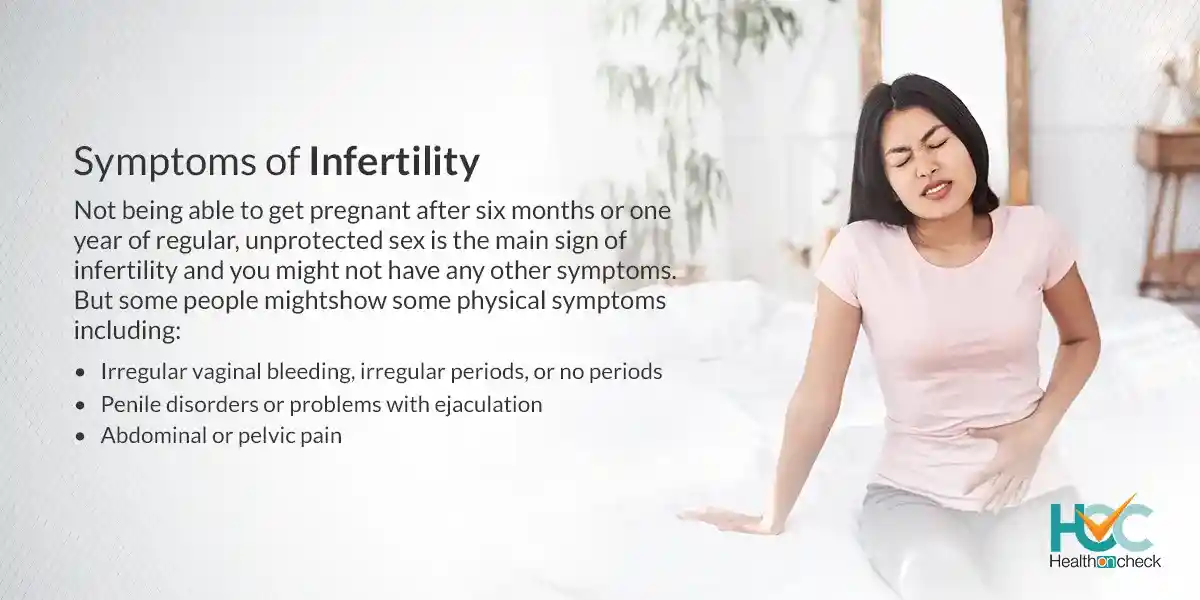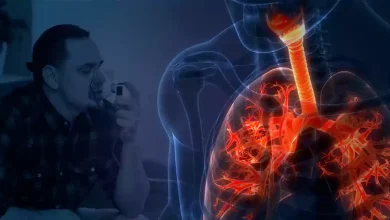All about Infertility?

What is Infertility?
Infertility is a condition where even after a year of trying to conceive you are not able to get pregnant. Ovulatory issues, endometriosis, low sperm count, or low testosterone can be the causes of infertility. The risk of infertility rises as you age. There are several treatment options available for people with infertility. If you and your partner are not able to conceive a baby, you are not alone. Millions of people across the globe face the same problem. Infertility might occur due to a health issue with either you or your partner, or an amalgamation of factors that prevent pregnancy but there are various safe and effective treatments available that can increase your chances of getting pregnant.
What are the Types of Infertility?
The types of infertility include:
Primary infertility: It’s the type of infertility where you have never been pregnant and are not able to conceive after one year (or six months if you’re 35 or older) of frequent, unprotected sexual intercourse.
Secondary infertility: In this type, you are not getting pregnant again after having at least one successful pregnancy.
Unexplained infertility: It’s the type where fertility testing hasn’t found a cause of why a person or couple is unable to get pregnant
What are the Symptoms of Infertility?

Not being able to get pregnant after six months or one year of regular, unprotected sex is the main sign of infertility and you might not have any other symptoms. But some people might show some physical symptoms including:
- Abdominal or pelvic pain.
- Irregular vaginal bleeding, irregular periods, or no periods.
- Penile disorders or problems with ejaculation.
What are the Causes of Infertility?
All of the steps during ovulation and fertilization are required to occur properly for you to get pregnant. Ovulation means the release of an egg from an ovary. Fertilization happens when the egg and sperm come together to form an embryo, which turns into an unborn baby during pregnancy. In some cases, the issues that lead to infertility in couples are present at birth and sometimes, they develop later in life.
The causes of infertility may affect one or both partners. In some instances, no cause can be found.
Causes of male infertility can include:
Problems that may affect how much sperm is made or sperm quality: These medical problems might include genetic defects, undescended testicles, hormones, and health problems including diabetes. Infections like gonorrhoea, chlamydia, mumps or HIV can also affect sperm. Enlarged veins in the scrotum, known as a varicocele, may affect the quality of sperm.
Problems with sperm to reach the female reproductive tract: These problems may occur because of sexual conditions including premature ejaculation, some specific genetic diseases like cystic fibrosis, physical problems like a blockage in the testicle, or harm or damage to the reproductive organs.
Some particular factors in the environment: Factors such as exposure to pesticides, other chemicals, or radiation may impact fertility along with medicines to treat bacterial infections, high blood pressure, and depression. And if the testicles are exposed to heat, like in saunas or hot tubs, that might impact their ability to create sperm.
Damage linked to cancer and its treatment: Cancer treatments including chemotherapy and radiation can impact sperm production.
Causes of female infertility can include:
Ovulation disorders: These problems impact the release of eggs from the ovaries which include hormonal problems like polycystic ovary syndrome. High levels of a hormone required to create breast milk, known as prolactin, also might affect ovulation. Either too much thyroid hormone, known as hyperthyroidism, or too little, known as hypothyroidism, can impact the menstrual cycle or lead to infertility. Other underlying causes might include excessive exercise, eating disorders, or tumours.
Problems of the uterus: It includes growths known as uterine polyps, problems with the shape of the uterus, or problems with its lower end, known as the cervix. Tumours in the wall of the uterus, known as uterine fibroids, also might result in infertility. Fibroids may block the fallopian tubes, where an egg and sperm join. They also might hinder a fertilised egg from attaching to the uterus, which is required for the development of an unborn baby.
Fallopian tube damage or blockage: Usually, these problems occur due to swelling of the fallopian tube, known as salpingitis. The swelling might happen because of an infection of the female reproductive organs known as pelvic inflammatory disease.
Endometriosis: In this condition, tissue that is similar to the inner lining of the uterus starts growing outside of the uterus. It might impact how well the ovaries, uterus, and fallopian tubes function.
Primary ovarian insufficiency: It occurs when the ovaries stop functioning the way they need to, and menstrual periods end before the age of 40. and its cause is not known. However, some causes associated with primary ovarian insufficiency involve immune system diseases, genetic conditions including Turner syndrome, and radiation or chemotherapy treatment.
Pelvic adhesions: These are bands of scar tissue that keep the organs together. They might develop after appendicitis, pelvic infection, endometriosis, or surgery of the abdomen or pelvis.
Cancer and its treatment: Some specific cancers, especially ones affecting the reproductive organs usually reduce female fertility. Both radiation and chemotherapy might also affect fertility.
What are the Risk Factors of Infertility?

Some risk factors affect both male and female infertility including:
Age: With age women’s fertility slowly starts to decline, especially in the mid-30s and after age 37 it drops rapidly. Infertility in older women usually occurs because of the lower number and quality of eggs, or to health problems that impact fertility. Men above the age of 40 might be less fertile than younger men. The risk of birth defects and genetic problems also increases for children born to men over age 40.
Tobacco and marijuana use: Smoking tobacco and using marijuana by either partner might reduce the chances of pregnancy. It can also make fertility treatments less effective. The risk of miscarriages might increase in women who smoke tobacco.
Alcohol use: Drinking alcohol is also a risk factor for infertility.
Being obese: An inactive and unhealthy lifestyle may increase the risk of infertility. Obesity is also connected with lower quality of semen, the fluid containing sperm.
Being underweight: People with eating disorders, including anorexia or bulimia are also at risk of fertility problems. People following a very low-calorie or restrictive diet also are at risk.
Exercise issues: A lack of exercise might cause obesity, which increases the risk of infertility.
What are the Complications of Infertility?
The main complication of infertility is not able to conceive and other complications might arise due to the infertility treatments including:
Increased chance of multiples (twins, triplets, or more): Production of multiple eggs and transferring more than one embryo raises the risk of getting pregnant with more than one foetus. Complications like premature birth, miscarriage, neonatal death, low birth weight, and long-term health disorders are more common among women pregnant with multiple foetuses.
Ovarian hyperstimulation syndrome (OHSS): It is a disorder that causes swollen and painful ovaries because of fertility medications. It might become serious and need immediate medical attention.
Ectopic pregnancy: IVF can cause an increased risk of ectopic pregnancy.
Failed cycles: A failed cycle occurs when you go through infertility treatment which doesn’t end in pregnancy.
How Infertility is Diagnosed?
To diagnose infertility testing, your doctor or the medical team will try to understand your sexual habits. They may also make recommendations to raise your chances of becoming pregnant but in some instances, no clear cause is found which is known as unexplained infertility.
Tests for men include:
Male fertility depends on the testicles that produce enough healthy sperm. The sperm requires to be released from the penis and reach the vagina, where it travels to the waiting egg. Tests for male infertility are performed to examine whether there are treatable problems with any of these steps.
You might have a physical exam including a check of your genitals. Certain infertility tests might include:
Semen analysis: Your doctor may ask for one or more samples of your semen. After collecting your semen it is sent to a lab to examine.
Hormone testing: Here a sample of your blood will be taken to check your level of testosterone along with other male hormones.
Genetic testing: It is usually performed to find out whether a genetic defect is causing infertility.
Testicular biopsy: Here a small amount of testicle tissue is taken and sent to a lab to check it under a microscope. This test is not so common and it’s performed rarely to detect whether there is a blockage in the reproductive tract that is blocking the sperm from leaving the body in semen. Usually, this test is done based on your physical exam, history, and lab tests. Sometimes, a biopsy might be performed to detect issues contributing to infertility. Or it might be done to collect sperm for assisted reproductive techniques, like in vitro fertilisation (IVF).
Imaging: In some instances, your doctor might refer to tests that create images of the inside of your body. For example, an ultrasound might be performed to find out problems in the scrotum, in the glands making fluids that become semen or in the tube carrying sperm out of the testicles. A brain MRI might detect tumours of the pituitary gland that are not cancerous. These tumours may cause the gland to produce an excessive amount of the hormone prolactin, which can cause the body to produce less sperm or none.
Other testing: Some other tests might be performed to check the quality of your sperm. For instance, a semen sample might be required to detect issues with DNA that may harm sperm.
Tests for women
Fertility for women depends on the ovaries that release healthy eggs. The reproductive tract must allow an egg to pass into the fallopian tubes and meet the sperm. Then the fertilised egg has to reach the uterus and connect to the lining. Tests for female infertility are done to detect problems with any of those steps.
You might have to go through a physical exam, such as a regular pelvic exam. Infertility tests for women might include:
Ovulation testing: Here a blood test is done to measure hormone levels to detect whether you’re ovulating.
Thyroid function test: It is a blood test that is performed if your doctor thinks your infertility may be linked to the thyroid gland. If the gland produces excessive or little thyroid hormone, that may play an important role in your infertility.
Hysterosalpingography: This test is done to examine the condition of the uterus and fallopian tubes. It also checks the blockages in the fallopian tubes or other issues. A special dye is injected into the uterus, after which an X-ray is taken.
Ovarian reserve testing: This test helps to determine how many eggs you have for ovulation. The method usually starts with hormone testing early in the menstrual cycle.
Other hormone tests: It examines levels of hormones that control ovulation along with checking the pituitary hormones that control procedures involved in having a baby.
Imaging tests: A pelvic ultrasound is performed to detect diseases of the uterus or ovaries. Sometimes a test known as a saline infusion sonogram is used to examine details inside the uterus that can’t be seen on a regular ultrasound. A saline infusion test is also known as a sonohysterogram.
Some other rare tests might include:
Hysteroscopy: Based on your symptoms, a hysteroscopy might be used by your doctor to detect a disease of the uterus. During the process, a thin, lighted device is attached through the cervix into the uterus to find out for any unusual signs. It also might assist in guiding minor surgery.
Laparoscopy: This test includes a tiny cut beneath the navel after which a thin viewing device is attached through the cut to check the fallopian tubes, uterus, and ovaries. This test can help to detect scarring, endometriosis, blockages, or other problems with the fallopian tubes. It also helps to find treatable problems with the ovaries and uterus. Laparoscopy is a form of surgery that can treat some specific conditions. For instance, it can be performed to get rid of growths known as fibroids or endometriosis tissue.
What are the Treatment Options Available for Infertility?
Infertility treatment is usually based on the cause and what you want. Factors such as your age, how long you have been trying to conceive and your personal preferences are some factors that are important for treating infertility. Sometimes, one partner only might require treatment, and sometimes involves both partners.
In most instances, people and couples with infertility have an increased chance of pregnancy. Things such as medication, surgery, or assisted reproductive technology (ART) are helpful. Also, lifestyle changes or improving the rate and timing of intercourse might improve your chances of pregnancy. Treatment can also include a combination of several methods.
Infertility treatment for women includes:
Lifestyle modification: Lifestyle changes such as losing or gaining weight, stopping smoking, drinking alcohol or using drugs, and improving other health conditions may improve your chance of getting pregnant.
Medications: Fertility medicines are available that stimulate your ovaries to ovulate more eggs, which raises your chance of getting pregnant.
Surgery: Surgery can help to open blocked fallopian tubes and detach fibroids, polyps, or scar tissue.
Your doctor might give suggestions on how you can improve your chances of conceiving including:
- Using a fertility tracking app to track your ovulation through basal body temperature, and noting the texture of your cervical mucus.
- Use a home ovulation kit, which you can get from a medical store or online to help predict ovulation.
Infertility treatment for men includes:
Medications: Medications can increase testosterone or other hormone levels. There are medicines available for erectile dysfunction which can help you to maintain an erection during sex.
Surgery: Surgery might be needed for some men to open blockages in the tubes carrying sperm or to fix structural issues. Varicocele surgery might make sperm healthier and improve the chances of conception.
In some cases, assisted reproductive technology (ART) might be needed for couples to conceive. ART is any fertility treatment involving a doctor or a medical team that handles the sperm or egg. To increase the odds of pregnancy, you may need to take medications to stimulate ovulation before trying one of these options:
Assisted reproductive technology (ART) treatment may include:
In vitro fertilisation (IVF): It involves retrieving eggs from your ovary, and then placing them with sperm in a lab dish where the sperm fertilises the eggs. Your medical team will transfer one to three of the fertilized eggs (embryos) into your uterus.
Intracytoplasmic sperm injection (ICSI): It is performed during the IVF procedure where an embryologist will inject a single sperm directly into each egg after which a member of your medical team will transfer one to three of the embryos into your uterus.
Intrauterine insemination (IUI): In this procedure, a long, thin tube is used to place sperm directly into your uterus. IUI is also known as artificial insemination.
Assisted hatching: It’s a process that includes opening the outer layer of an embryo making it simpler for it to implant in your uterine lining.
Third-party ART: Here couples might use donor eggs, donor sperm, or donor embryos. Some couples require a gestational carrier or surrogate.
Living with Infertility
Infertility might cause many challenges and can make you feel devastated and sad if you’re trying to start your family but are not able to conceive. It might impact your relationships along with your emotional and mental health. Infertility treatments can be costly which can put you under financial stress. If you’re not getting pregnant despite trying your best, it might be time to contact a doctor who can determine if there’s a cause and then discuss possible treatment options with you.
Whom to Consult?
People who are under the age of 35 and who aren’t pregnant after trying for one year and more shall seek medical assistance. You should seek help as early as possible if you are 35 to 39 years old. If you’re 40 or older, you need to go for evaluation after less than six months of trying. Your chances of getting pregnant reduce with age. Irrespective of your sex, you should go for medical help early if you have a risk factor or medical condition that might impact fertility. You shall also go for prompt evaluation if you have a history of risk factors for premature ovarian failure, serious endometriosis, or have or suspected uterine/tubal disease.




